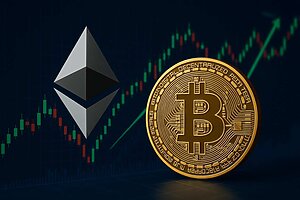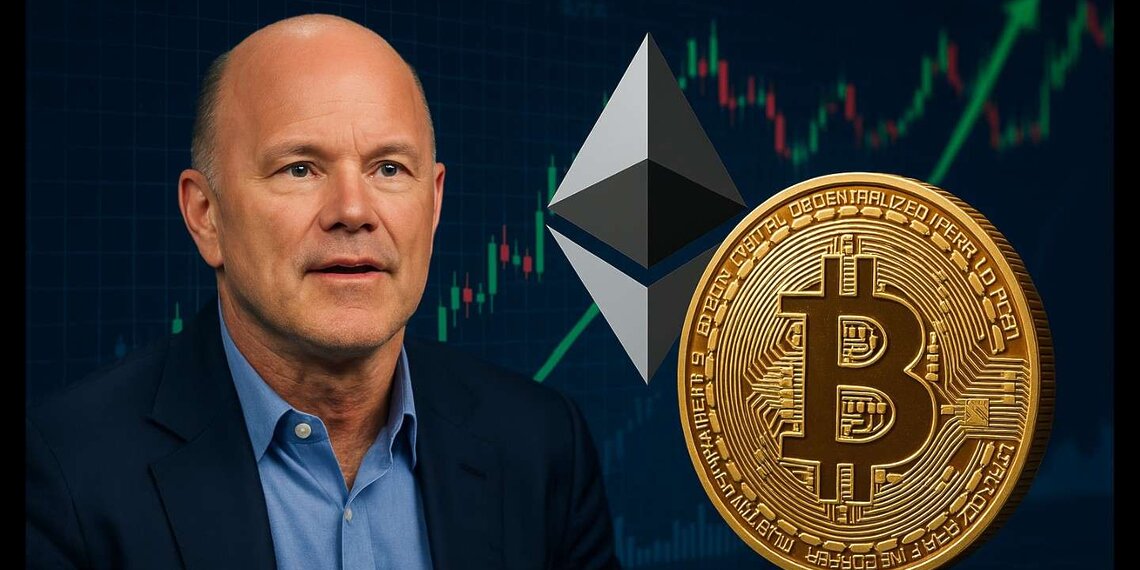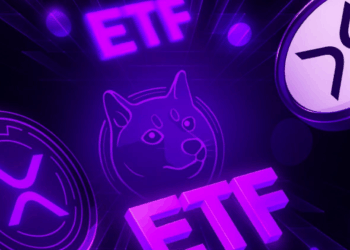Mike Novogratz, the CEO of Galaxy Digital, has made a compelling case for Ethereum potentially outperforming Bitcoin in the near future. In a recent interview with CNBC, Novogratz pointed to a combination of tightening supply, rising institutional demand, and favorable macroeconomic conditions as the key drivers behind Ethereum’s bullish outlook.
Novogratz emphasized that Ethereum is experiencing a significant surge in institutional interest. Corporate treasuries are increasingly accumulating ETH, with firms like SharpLink Gaming now holding over 360,000 ETH. This trend is not limited to retail speculation. According to Novogratz, real institutional inflows are entering the market, especially following the launch of Ethereum ETFs. He estimated that more than $20 billion has recently flowed into the crypto space, reigniting retail enthusiasm and pushing prices higher.
One of the most critical factors supporting Ethereum’s momentum is its constrained supply. As more ETH is locked up by institutions and fewer tokens are available on exchanges, the market faces a supply squeeze. Novogratz believes that if Ethereum breaks above the $4,000 threshold, it could enter a phase of price discovery, where its value is redefined by broader market participation.
While Novogratz remains optimistic about Bitcoin, predicting it could reach $150,000 under current economic conditions, he sees Ethereum as having more upside in the short term. He described Bitcoin as a stable store-of-value asset, whereas Ethereum behaves more like a growth stock, responding dynamically to market catalysts.
Macroeconomic trends also play a significant role in Novogratz’s analysis. He noted that the Federal Reserve is under political pressure to cut interest rates, with the White House reportedly favoring a more dovish Fed chair by May 2026. If rate cuts materialize, they could increase liquidity in the financial system, making risk assets like cryptocurrencies more attractive to investors. Historically, Fed rate cuts have boosted crypto markets by increasing liquidity and encouraging investment in higher-yield assets.

Inflation is another factor that could drive investors toward decentralized assets. Novogratz warned that new tariffs might raise prices, further pushing capital into crypto. He cited strong investor confidence following recent legislation, along with rising capital expenditures and foreign investment, as signs that GDP and inflation could climb in the coming year.
The success of Ethereum ETFs, particularly BlackRock’s ETHA fund, adds another layer of support. ETHA recently surpassed $10 billion in assets, making it the third-fastest ETF to reach that milestone after Bitcoin’s IBIT and FBTC. This milestone reflects growing investor confidence and mainstream acceptance of Ethereum as a viable investment.
In conclusion, Novogratz’s outlook suggests that Ethereum is well-positioned to lead the next phase of the crypto rally. With institutional adoption accelerating, supply tightening, and macroeconomic trends favoring risk assets, Ethereum may indeed outperform Bitcoin in the coming months.










